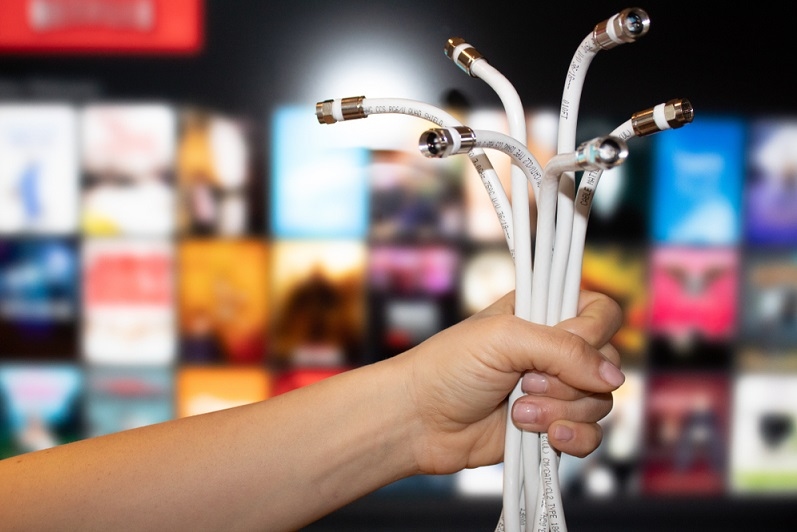The Best Cable TV Services: Here Are Things To Keep In Mind

When cable first entered the television scene, most people thought it would be a fad. We thought that the cable boxes would be a novelty that would be replaced with a streaming app or dongle on our TVs within a few years. We were wrong. Cable has transformed from a novelty into a necessity for most households. People now rely on cable for TV and internet service. If you have cable, you probably enjoy a variety of channels, DVR, on-demand content, and a reliable connection. Unfortunately, not all cable providers offer great service. If you’re unhappy with your current cable provider, you can try switching to another provider to see if they offer better service. However, as time has gone by, cable has continued to grow in popularity.
In fact, according to Statista, there are currently around 90 million cable subscribers in the United States alone. This number continues to rise each year. Whether you’re a millennial or an older adult, you’ve probably heard about cable TV services at least once in your life. Whether you receive cable TV or not, you may have wondered how much it costs. The truth is that cable TV is not a one-size-fits-all package. Depending on your location and service provider, the price of cable TV can range from a few dollars per month to hundreds of dollars per month. In this guide, we will look at the factors that affect the price of cable TV and how you can save money by shopping around for the best deals. If you’re not sure what they are or if you know but aren’t sure if they have them where you live, we can answer all of your questions right here. Keep reading to learn more.
What is Cable TV Service?
For those unfamiliar with cable, it refers to a type of television service that delivers video content via a wired connection. This is in contrast to the more common form of TV service, which sends programming “over the air” and through the air via electromagnetic waves. While cable TV may seem antiquated compared to streaming, it has a few advantages. Cable doesn’t require a strong internet connection or data usage like streaming does, making it a good option for those who don’t have great internet or who have data caps. It’s also a good choice for people who want to keep their TV consumption private. Since cable doesn’t send data through the air, it’s not susceptible to eavesdropping. This connection travels from a cable TV provider and is connected to a set-top box in your home.
You use an antenna to receive over-the-air TV channels, but you need a cable box to watch channels from your cable provider. Cable TV service providers deliver a wide range of channels, including local, premium, sports, and children’s programming. Selecting a cable TV provider can be difficult with so many options available. To make the process easier, consider a provider’s channel lineup, customer service, and price. With many cable TV providers now offering a variety of bundles, you can save money and get more channels than ever before. For a more detailed look at each provider, check out our in-depth reviews. We have scoured the market to find the best cable TV providers for every type of viewer. Most providers allow you to choose from multiple packages to find the one that best meets your viewing needs. You can also add or drop channels from one package to another at any time.
Cable TV Advantages
Wide Variety of Channels and Content: Cable TV providers offer packages with a wide variety of channels, and you can usually add or remove channels as needed. This is especially useful if there are certain types of channels you want to watch but aren’t included in the basic package.
Accessibility: Cable TV providers are capable of reaching far more people than satellite TV providers. This means that you’re more likely to find an available provider to suit your needs, regardless of your location.
Affordable Monthly Payments: With a cable TV package, you’ll likely have a monthly payment that is less expensive than what you would pay for satellite TV. This is especially true if you opt for a lower-tier cable package.
How Does Cable TV Work?
To use cable TV, first, you’ll need to find a cable company that serves your area. There are many cable providers, including the following:
- Comcast - Comcast has a large customer base and is one of the biggest cable providers in the country. It offers a wide range of cable packages with a variety of channel options.
- Charter - Charter is another major cable provider that offers cable TV services in many U.S. areas.
- Cox Communications - Cox Communications is one of the most popular cable providers in the U.S., particularly in the Southwest.
- Suddenlink - Suddenlink is a cable TV provider that serves a large portion of the country.
- WOW - WOW is a cable company that primarily serves Eastern states, including New York and Florida. After choosing a cable provider, you’ll need to schedule a visit from a cable installer. During this visit, the installer will run a cable from the main cable box to your home. You’ll then have to connect the cable box to your television. You can watch cable TV on your television by plugging it into a cable box or set-top box.
Disadvantages of Cable TV
- High Monthly Payments - Depending on the package you choose, cable TV can be very expensive. Many people complain that the high cost is not worth the amount of content they receive.
- Technical Issues - Even though cable TV is more reliable than satellite TV, it still has issues from time to time. If a problem arises, you may have to wait several days before it is fixed. Also, cable internet and cable TV are often bundled together. This means that if one service doesn’t work, you could be without the internet as well.
- Less Variety - Some people don’t like that cable TV doesn’t offer a wide range of channels like satellite TV does.
Finding the Right Cable TV Service for You
- Ask for Recommendations - If you know people who have cable TV, ask them which service they use and what they like and dislike about it. This will help you get a better idea of what you should look for in a cable provider.
- Find Out How Service is Delivered - Before choosing a cable TV provider, determine how service is delivered in your area. If there are a lot of nearby towers, you may be able to access a wide variety of channels. However, if there are few towers nearby, you may only be able to access a few channels.
- Check Package Details - Before you sign up, be sure to review all of the details of each cable TV package. You’ll want to make sure that you’re getting a package that fits your needs and lifestyle.
Conclusion
Cable TV has been around for a long time and has proven to be a reliable source of entertainment. Not only can you watch your favorite shows, but you can also catch the latest news and sports highlights. Cable TV packages are more affordable than ever before, and you can choose the channel lineup that works best for your family. Plus, many cable providers now offer streaming services, which means you can watch TV from any device at any time. What’s not to love? It’s easy to use, and most providers offer a wide variety of channels and packages. However, cable TV is not without its downsides. It can be expensive, and it is still susceptible to occasional outages. If you’re currently without cable TV or are unhappy with your current service, it may be time to switch to cable. You can use our guide to help choose the best cable TV package for your needs and lifestyle.
This content was created by AI





